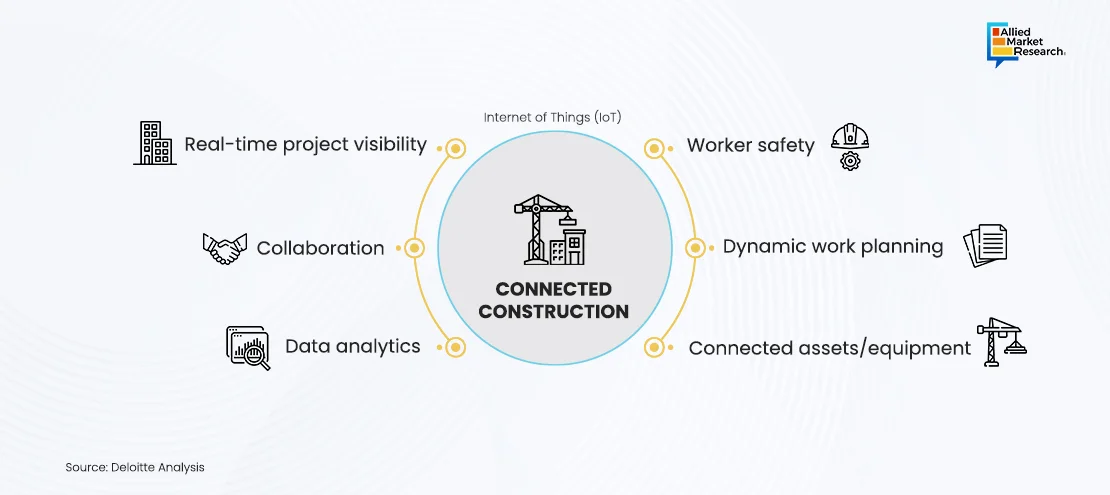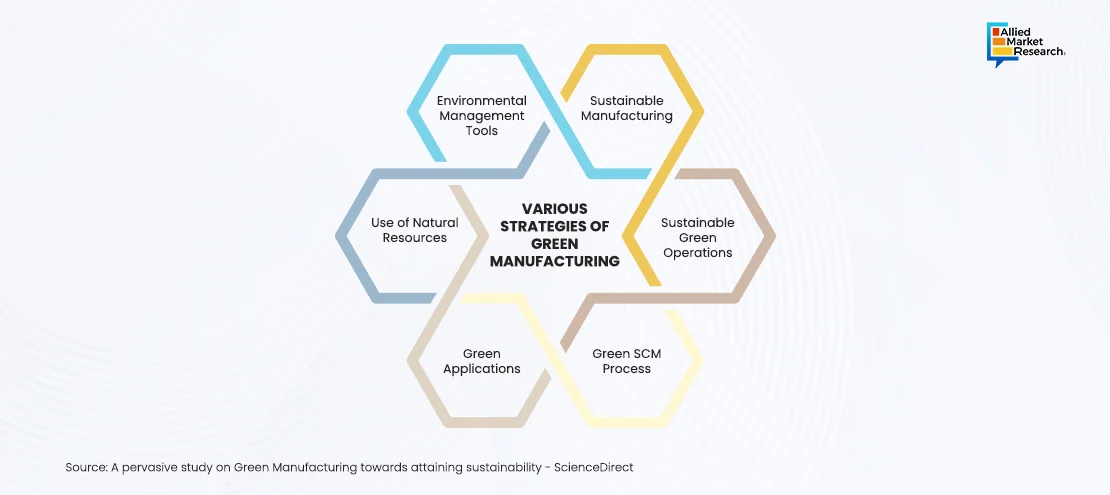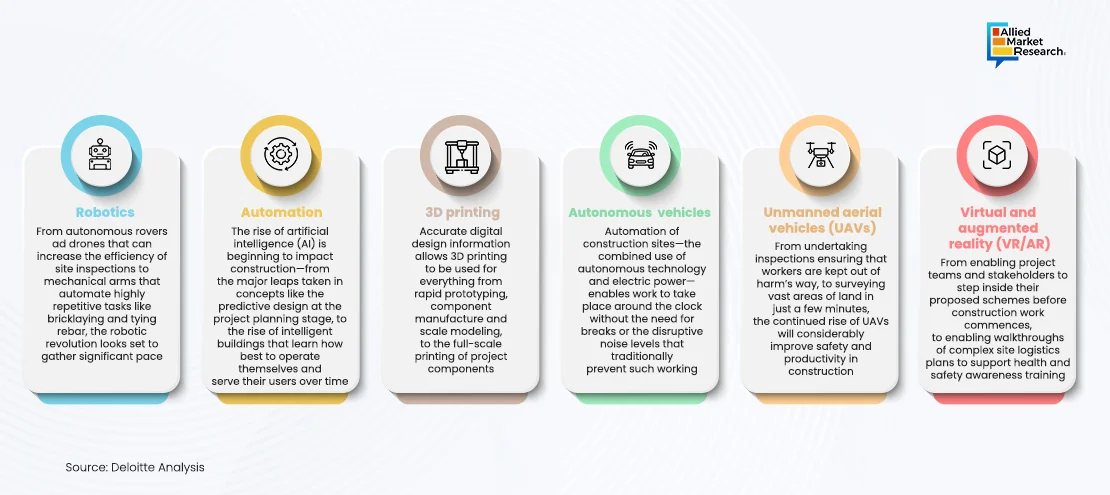Table Of Contents
- Digital transformation and the shift toward sustainability creating favorable conditions for the growth of the industry
- Growing adoption of automation and increasing emphasis on supply chain resilience helping the sector flourish
- Smart construction techniques and advanced manufacturing technologies reshaping the dynamics of the domain
- M&A deals and partnership agreements strengthening the foothold of the industry
- Innovative product launches by multinational technology giants impacting the landscape positively
- The final word

Sonia Mutreja

Koyel Ghosh
CONMA Industry Outlook for 2025: AMR’s Perspective on the Major Trends, Strategies, and Advancements Redefining the Sector

Over the last few years, the majority of developed and developing countries have invested heavily in infrastructure development projects to improve the quality of public services for their citizens. This has led to a massive surge in the growth rate of the construction and manufacturing domain. Additionally, the rising pace of industrialization in developing economies has positively impacted the sector in the last few years. In the post-pandemic period, both real estate developers and manufacturing companies have adopted several innovative strategies that have enabled them to revive their operations and compensate for the losses made during the pandemic. This newsletter highlights all such important strategies, trends, technological advancements, and other stakeholder actions that are expected to shape the landscape in 2025.
Digital transformation and the shift toward sustainability creating favorable conditions for the growth of the industry
The increasing integration of emerging technologies such as Building Information Modelling and the Internet of Things is an important trend observed in the CONMA domain. BIM is a modern construction approach that involves the creation of 3D digital representations of various physical and functional characteristics of the building to be constructed. While BIM has played an important role in the planning, design, and execution of new-age infrastructural facilities, the advent of AR/VR technologies is expected to broaden the scope of the building information modeling industry in 2025. Similarly, the contribution of IoT in smart city projects is anticipated to expand in the coming year, thus accelerating the growth of the CONMA sector.
On the other hand, the gradual shift toward sustainability has opened new avenues for growth in the sector. The CONMA domain has been regularly criticized for its role in environmental degradation, climate change, and global warming. To deal with this challenge, governmental authorities have passed legislation mandating the use of green building practices to decarbonize the sector in the long run. At the same time, real estate developers are predicted to invest in energy-efficient designs and low-emission construction techniques to reduce the carbon footprint of the landscape in 2025.

Growing adoption of automation and increasing emphasis on supply chain resilience helping the sector flourish
One of the key strategies adopted by the majority of multinational manufacturing companies is the deployment of automation technologies and robotics solutions to improve their operational efficiency and productivity. These innovations help in performing repetitive tasks, thus freeing up the labor for more creative activities. Companies are even deploying collaborative robots and unmanned aerial vehicles in their warehouses to aid employees in inventory management and product delivery. The accuracy and precision offered by automation techniques have led to many businesses increasing their investments in these innovations. Additionally, the rising focus on workers’ safety is predicted to accelerate the transition toward robotics in manufacturing in 2025.

At the same time, construction and manufacturing companies have also been designing comprehensive strategies to enhance the resilience of their supply chains in the near future. The huge disruptions faced by the logistics sector in the past few years due to the pandemic and global geopolitical conflicts have reduced the profit share of many multinational companies. Hence, many leading players in the domain have started diversifying their suppliers and sourcing raw materials from local suppliers. Furthermore, predictive analytics mechanisms and digital inventory management platforms are estimated to become popular in 2025.
Smart construction techniques and advanced manufacturing technologies reshaping the dynamics of the domain
The use of emerging technologies such as the Internet of Things in infrastructure development projects has increased progressively in the past few years. The IoT in construction industry, which accounted for $11.2 billion in 2021, is expected to gather a revenue of $44.2 billion by 2031, rising at a CAGR of 14.6% during 2022-2031. The increasing preference for advanced gadgets such as smart glasses, wearable sensors, IoT-enabled drones, smart helmets, safety vests, etc., is expected to solidify the position of the industry in 2025. These innovations are increasingly being deployed to provide real-time data on the environmental aspects, structural health, and project completion stages, thus helping builders make informed business decisions.
Similarly, manufacturing companies, too, have been making proactive investments in additive production techniques. For instance, 3D printing has helped manufacturers to improve their efficiency through resource optimization and reduced wastage. This has ultimately enabled enterprises to cut down their input costs, increase their sales, and expand their profit margin. On the other hand, research in the field of nanotechnology has led to the development of advanced materials such as graphene and high-tech polymers. These developments are expected to open avenues in the semiconductor manufacturing and fabrication industries in 2025.

M&A deals and partnership agreements strengthening the foothold of the industry
Along with technological advancements and innovations, key players in the CONMA sector have planned to establish strategic alliances with their peers to expand their operations globally. For example, in January 2025, Swisscom, a leading telecommunications equipment manufacturing company, announced the acquisition of Vodafone Italia, an Italian telecom giant. As per Swisscom, this business move is anticipated to increase the company's footprint in the coming period, thus helping it dominate the industry in the coming period. Recently, CPP Investments and Global Infrastructure Partners (GIP), two leading infrastructure investment companies, declared their plans to acquire Allete, Inc., an electric services company, in the 2nd quarter of 2025.
On the other hand, again in January 2025, Honeywell International Inc., a multinational conglomerate, announced that it had signed a definitive partnership agreement with NXP Semiconductors, a leading player in the semiconductor design and fabrication industry. Under this collaboration, both parties have agreed to jointly develop AI-driven aviation technology and autonomous flying systems. The partnership will help integrate NXP's computing architecture and Honeywell's cloud-connected Anthem avionics, thus enabling these companies to design state-of-the-art AI systems.
Innovative product launches by multinational technology giants impacting the landscape positively
Recently, many key players in the CONMA domain have announced their plans to launch ingenious products and services to address the diverse set of demands of their consumer base. For instance, Xiaomi Corp., a leading smartphone manufacturing company, has stated that its electric vehicle manufacturing company will be completed by mid-2025. This expansion strategy is anticipated to increase the revenue share of the company in the coming period. Similarly, Tesla and Panasonic have been separately working on the development of high-end EV batteries and are expected to begin the production of their prototypes in 2025.
Hyundai and LG Energy Solutions have established a joint venture to design advanced EV batteries and are estimated to launch their product by the end of 2025. Both companies jointly inaugurated their first industrial facility in Georgia. Similarly, Ford and SK On have also signed a partnership agreement to invest $5.8 billion to develop EV batteries. The product is anticipated to enter the market by late 2025. Taiwan Semiconductor Manufacturing Co. (TSMC), on the other hand, has announced its plans to start manufacturing ICs and chipsets in the US in the first half of 2025. These product launches and expansion strategies are predicted to strengthen the foothold of the domain in the coming year.
The final word
The construction and manufacturing industry is likely to expand its revenue share significantly in 2025 owing to the growing adoption of modern technologies such as BIM, IoT, and robotics. The shift toward sustainability and increased emphasis on supply chain management is predicted to impact the domain positively in the near future. In addition, the strategic alliances established by major companies and the ingenious products launched by leading businesses are estimated to play a huge role in the sector’s growth in 2025.
Contact our experts for tips and recommendations on how to capitalize on the latest trends in the CONMA domain!

